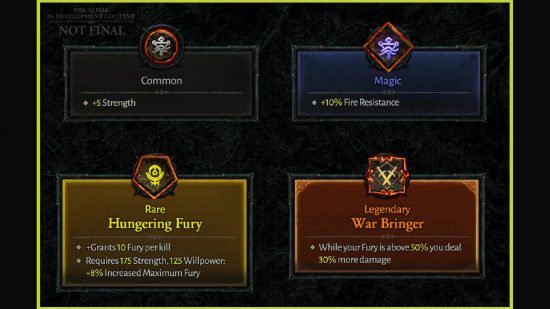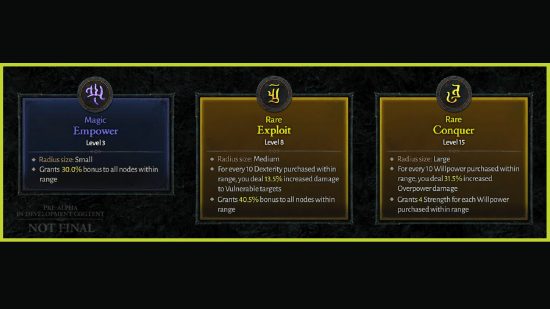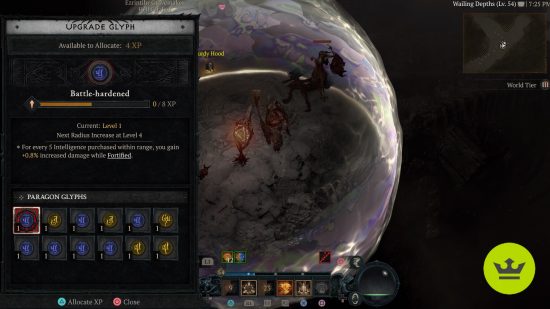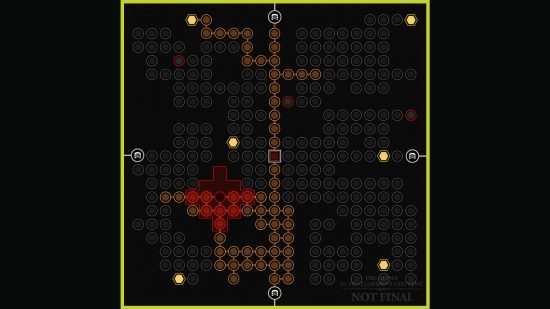How does Paragon work in Diablo 4? The Diablo 4 Paragon Board will be one of the main ways you will progress and customize your characters once you reach the later levels. With that said it’s undoubtedly a confusing system that you won’t be exposed to until later in the game. Thankfully, we’ve got you covered with everything you need to know about the Diablo 4 Paragon Board, including the how to earn Paragon Points, the various tile types, and more.
It’s worth noting that the Paragon Board in Diablo 4 is open to all of the Diablo 4 classes and will play a key role in creating the most powerful endgame Diablo 4 build. You’ll want to know all you can about the Paragon ranks to make the best Diablo 4 builds so you’re ready for action no matter what class you’re playing.
Diablo 4 Paragon Boards explained
Unlocked after reaching level 50, the Diablo 4 Paragon Board is used to fine-tune your endgame character builds by investing points in various tiles and nodes on the board. Paragon Points are earned every 25% of the way through a level.
Players will begin at the central tile of the Paragon Board and can spend Paragon Points, earned by levelling up, to purchase titles radiating outwards. Once you reach the edges of the board, you’ll find gate tiles which unlock further Paragon Boards that can be attached.
Besides gate tiles, there are several other Paragon Board tiles you’ll need to be aware of to fully understand this Diablo 4 endgame levelling system. Blizzard detailed the Paragon Board system in a Diablo 4 quarterly update for December 2021.

Diablo 4 Paragon Board tile types
There are six Diablo 4 Paragon Board tile types:
- Normal tiles (grey) – A common tile that provides a small but meaningful stat boost
- Magic tiles (blue) – Found in clusters and provide a more diverse range of potent benefits
- Rare tiles (yellow) – These offer significant boosts to several stats and will greatly impact builds. Additionally, these tiles also have bonus effects once you raise a specific attribute to a certain level
- Legendary tiles (gold) – The most potent tile, offering changes and improvements to class mechanics. After the first Paragon Board, each new board will have a single Legendary tile at its centre
- Gate tiles (white) – Found at each edge of the Paragon Board, these tiles let you attach new Boards to your existing one, each with unique layouts and titles
- Glyph sockets (red) – Tiles that can have Paragon Glyphs socketed
You’ll use a combination of all these tile types to progress through the Paragon Board and improve your character and build effectiveness.

Diablo 4 Paragon Board Glyphs and Sockets
The Paragon Board in Diablo 4 can also be altered with Glyphs and Sockets that are upgrades by completed Nightmare Dungeons.
A Socket tile is a unique tile that can be equipped with a Glyph. Glyphs are upgrade items found while exploring and defeating enemies that will provide various effects to nearby tile nodes when slotted into a Socket tile on the Paragon Board.

Furthermore, Glyphs can also be upgraded by completing Nightmare Dungeons. Upgrading a Glyph will increase the radius of its effect when slotted onto the Paragon Board, allowing it to apply the bonus to even more tiles.

How to unlock the Paragon Board in Diablo 4
The Diablo 4 Paragon Board becomes available once you reach the Diablo 4 max level, and will continue to expand as you engage with the system.
Once you have reached the max character level by earning enough XP, you’ll unlock the Paragon Board system and begin earning Paragon Points instead of Skill Points. This system is available on all classes, so you’ll be able to dive in once you reach the required character level.

How to earn Paragon Points in Diablo 4
Diablo 4 Paragon Points are earned via levelling up through XP and completing Renown challenges in different regions.
Once you reach the max level, you’ll begin earning your first Paragon Points to spend on the Paragon Board. You will earn one Paragon Point every 25% of a level, meaning you will get four Paragon Points per level. However, only a limited amount can be earned this way. To get the maximum amount of Paragon Points, you’ll also need to complete Renown challenges in each region of the Diablo 4 map, some of which offer additional Points to spend on the Paragon Boards.

That’s all you need to know about the Diablo 4 Paragon Board system, including how to unlock the Paragon Board, how to earn Paragon Points, and all about the different tiles, Glyphs, and Sockets available. With this knowledge, you’ll be one step closer to making the most powerful demon hunter out there, including the best Diablo 4 Barbarian build, Diablo 4 Druid build, or Diablo 4 Rogue build. With leveling taking quite a while, check out the Diablo 4 class tier list so you’re certain on your chosen class before starting out.
